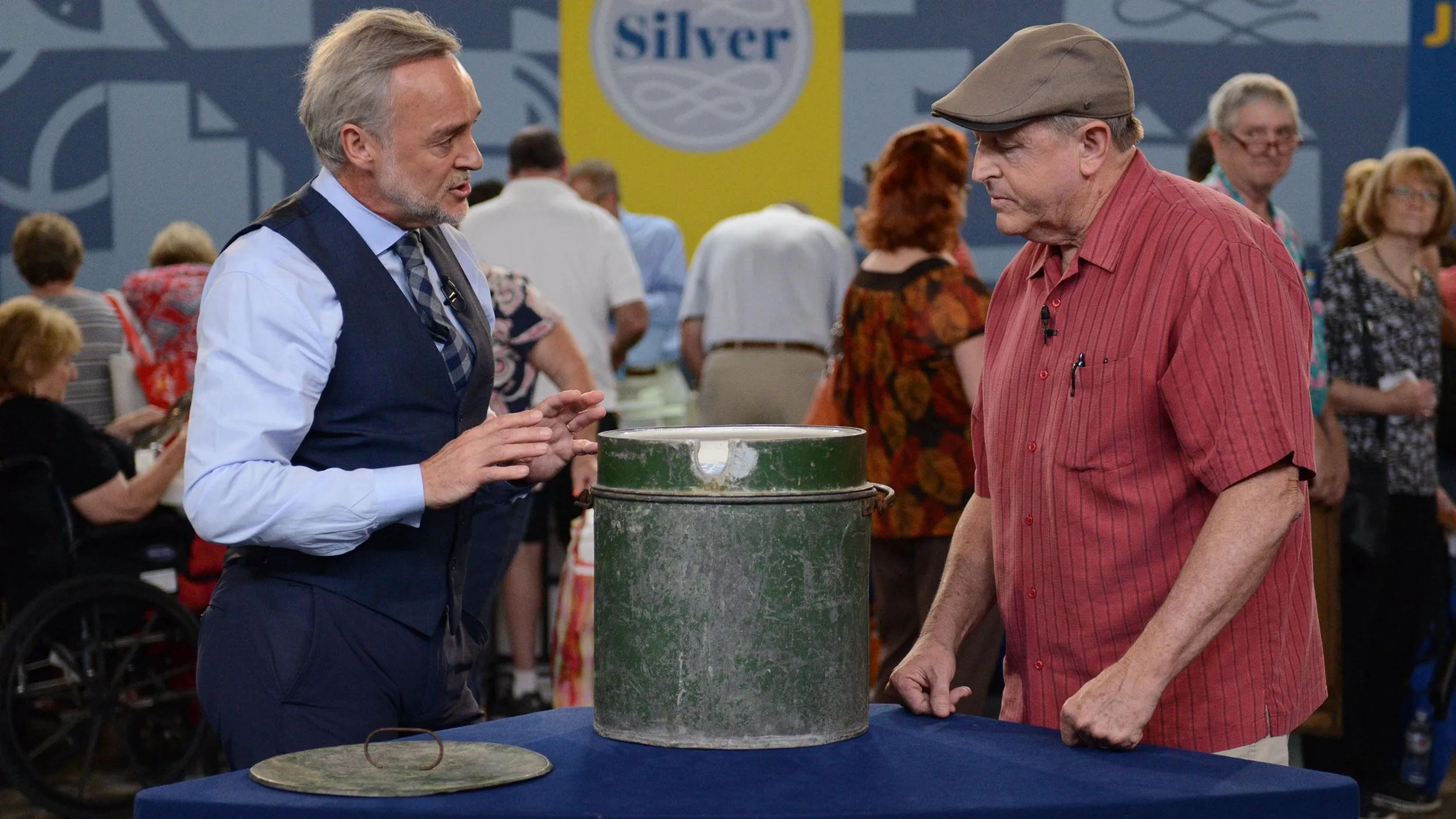GUEST: Well, I brought my father. He was Joe C. Fortenberry, and he was captain and high scorer of the first Olympic basketball team in Berlin, Germany in 1936. They beat Canada, and he scored eight points in the last game, and the score was 19-8. Played in a driving rain and mud.
APPRAISER: So this is the first year that basketball was included as an Olympic event.
GUEST: Yes.
APPRAISER: As you said, the U.S. wins 19-8 in a downpour that turned the clay and sand surface they had to play on into mud.
GUEST: Just a mess, absolute mess. No dribbling-- you just had to throw it. And it was a driving rain.
APPRAISER: Right. And what did your father tell you about the game?
GUEST: Well, he said it was a joke. He said it was Hitler's fault. Hitler said basketball should be an outdoor sport, so they had it outdoor on a clay court.
APPRAISER: Right.
GUEST: So that's the way it was.
APPRAISER: Right, which unfortunately for the game was a terrible way to start basketball being an Olympic event. But ultimately, a great result for the U.S., getting the gold medal. Tell us some more about your father's career in basketball.
GUEST: Well, he went to a little school called West Texas in Canyon, Texas, and they were the tallest team in the world back then. Everybody was over six feet back then. He was 6'7". Then he went on to play in the AAU for industrial teams. The McPherson Oilers was the team that he played for that went to the Olympics.
And then later, he played for the Phillips 66ers. And he is credited by the New York Times in 1936 with inventing the slam dunk.
APPRAISER: So he's credited with being one of the first, if not the first, to do a slam dunk.
GUEST: Yes. He's also the reason, or one of the reasons, for goaltending, because there was no goaltending. He would just jump up and swat the ball away, and finally-- I don't know when they did it-- they decided, "We can't let them do that." And also they used to have a jump ball after every made basket, and he would get every jump ball.
APPRAISER: Right.
GUEST: So they got rid of that, too.
APPRAISER: He changed rules of basketball.
GUEST: Yes, he did.
APPRAISER: So he was the star of the Olympic team.
GUEST: Yes.
APPRAISER: He was one of the stars of the Phillips 66 Oilers.
GUEST: Yes, 66ers.
APPRAISER: Which was an AAU team, but it was the premier league for the United States.
GUEST: They were the best ones in the world.
APPRAISER: Before the NBA came along.
GUEST: I have this great memory when I was in high school out in front of our house, shooting goals and trying to dunk it. And I'm a little challenged—I was only 6'2". And he came home, he has his hat on and his pipe, he's about 55, takes his hat off, takes his pipe out, says, "Well, maybe I can still do that." He jumps straight up and dunks it two-handed at the age of 55. His pipe goes flying, and then he has this funny grin on his face and he says, "I don't think I'll ever do that again."
APPRAISER: That's unbelievable. We have his Olympic gold medal that you've brought today. We also have a great photo, what we thought was a great shot, because it has him doing a slam dunk.
GUEST: Yep.
APPRAISER: The gold medal is in the original box. Now, regarding the condition, it's in near-pristine condition with just one mentionable. We have one line running through the "L-I-N" of "Berlin."
GUEST: Uh-huh.
APPRAISER: Which I believe is perhaps a flaw in the minting process rather than a scratch.
GUEST: Oh, okay. Will that affect the value?
APPRAISER: I don't expect that to affect the value. What kind of value have you read about on the medal? What can you tell me about the medal?
GUEST: Well, one of his teammates had one and had it sold last year, but it had had a hole drilled in it and used as a necklace. And I believe it sold for $66,000.
So I think this is a premium, and I'm prejudiced, but my father was important in basketball history, so I think it's worth $100,000.
APPRAISER: We had a previous medal in 2015 the family brought in to the ANTIQUES ROADSHOW in Tucson, that medal that you saw later sold at auction. It was from a family member, and at that time, that was the only gold medal from the 1936 Olympics basketball team to ever come up not only for auction, but even to surface for the public to see.
GUEST: Oh, okay.
APPRAISER: So now we have the second one that we've seen come up that somebody is showing the public. Definitely a museum piece. So we do have that comparison-- $67,000, the one you talked about-- the condition it was in was much lesser condition. This one, the importance of your father, his impact to the game, is huge, and this is by far the most important U.S. gold medal that we've seen come in at the sports table at ANTIQUES ROADSHOW.
GUEST: Oh, boy.
APPRAISER: I would put a value of this, at auction, of $100,000 to $150,000.
GUEST: Wow. I was right, more or less. Thank you. That is incredible.
APPRAISER: And for insurance, I would easily put a value on it of $175,000.
GUEST: Wow. Well, it'll go back in the lock box.

